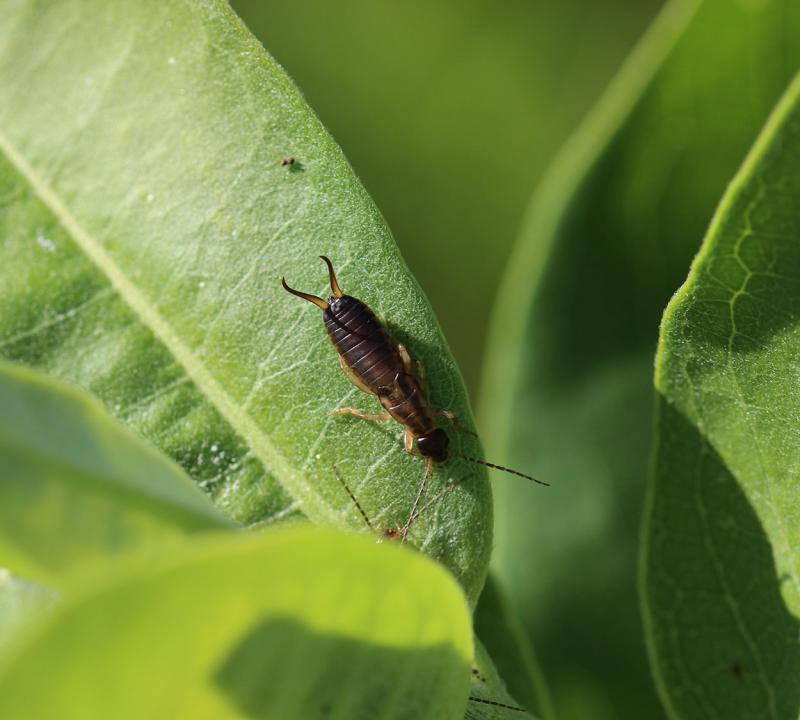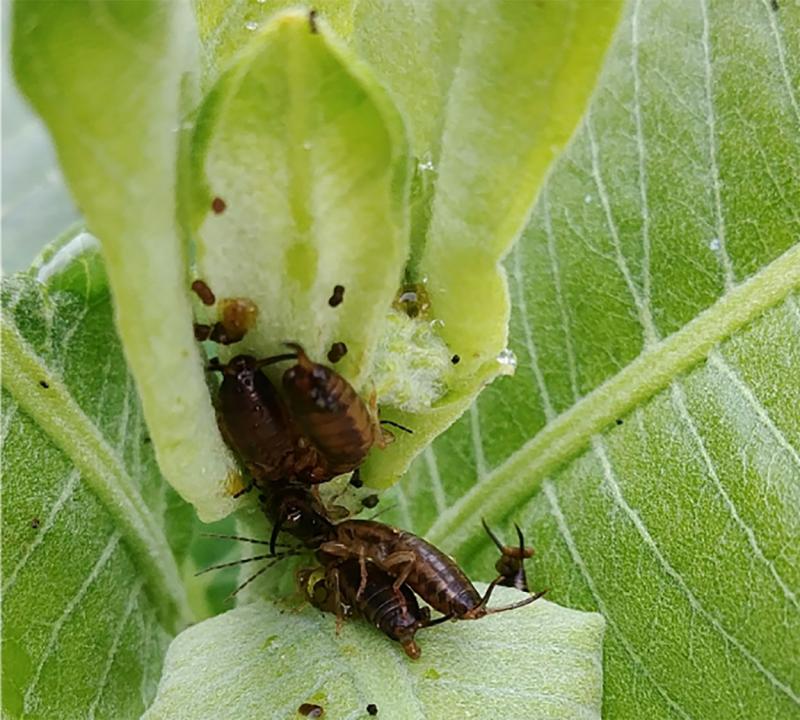
Originally Submitted: June 4, 2021
Although earwigs typically prefer wet conditions, I have been seeing quite a few so far this year. It’s important to remember that watering lawns or potted plants around the house provides ideal earwig habitat. Earwigs may look quite menacing at first glance with the large, pincher-like appendages at the end of their bodies. However, they are only a nuisance pest that often turns into a accidental home invader (Figure 1). Earwigs don’t do well indoors, as there aren’t food sources readily available to them, but still, no one wants to see an earwig indoors.
The name earwig literally means “ear creature,” and it was given to these insects due to a superstition that they would crawl into human ears and bore into the brain. Fortunately, these were just superstitions, and earwigs are not known for crawling into people’s ears while they sleep.
There are many different species of earwigs present in North America, with most being non-native. The European earwig is the most abundant and commonly observed species.

Typically, earwig populations go undetected, but their populations can increase when the weather is warm and humid. Typically, earwigs are found under logs and other shade-providing objects in the yard, especially in areas where the soil is moist.
In South Dakota, it is common to observe earwigs on milkweed plants (Figure 2). European earwigs will consume monarch eggs and young caterpillars. If your goal is to provide monarch habitat and you observe earwigs on the milkweed, simply remove them by hand and destroy them. If left on the milkweed, they will have a negative impact on the monarch activities. Using insecticides to manage insects on milkweed will harm monarch caterpillars and is not advised.
Earwigs tend to wander around in search of moisture or an exit once they find themselves indoors. Therefore, they can be found almost anywhere, but are most commonly seen in kitchens and bathrooms. Earwig entrance into a home can be difficult to block, as they are able to pass through very small spaces.
Management Recommendations
- If you are finding earwigs indoors, examine doors and windows to make sure that they are properly sealed. Often, worn weather-stripping will permit the entrance of insects into a home. Earwigs can also hitchhike inside on garden produce or flowers, so give those items a shake or a good wash outside.
- Remove any boards, logs and decaying plant matter from around the home, as they provide moist habitats for earwigs. In some cases, these objects will attract earwigs.
- Elevate potted plants that are outside to promote air circulation underneath the pot.
- Stick traps can be used to catch earwigs inside and outside the home.
- Exterior perimeter insecticide applications can be used to effectively stop earwigs that are gaining entry around doors and basement windows.
If earwigs make it into the home, the easiest way to manage small populations is to simply trap them and dispose of them.


